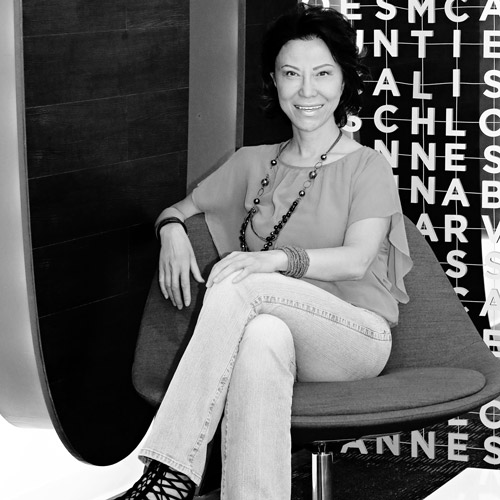Dan Malasky has a lot of ground to cover these days. Roughly a year ago at the United States Tennis Association (USTA), Malasky’s day-to-day focus was on the legal oversight of its professional tennis division, which includes the US Open tournament in New York and team events such as the Davis Cup, Fed Cup, and the Olympics. He has also served as general counsel to USTA Player Development.
But now his title and his role encompass much more with his new position as general counsel and managing director of business affairs for the USTA’s new National Campus in Orlando, Florida. “My position previously, as it relates to professional tennis, was pretty awesome in and of itself,” Malasky says. “With respect to the US Open, for example, we draft and review more than 1,200 agreements annually. When you take what I’m doing on the professional tennis side and add the new responsibilities of the new USTA National Campus, now my legal involvement runs the gamut.”
Malasky is quick to credit his team at the USTA, but also doesn’t deflect from how much work his job entails. The sixty-four-acre site will feature more than one hundred courts—including red and green clay courts, hard courts, and six indoor courts—as well as a youth tennis family zone with thirty-six- and sixty-foot courts, according to a USTA press release. The site will be open to the public and house a collegiate tennis center capable of hosting a number of college championships and College MatchDay. It will also serve as the home for the University of Central Florida men’s and women’s varsity tennis teams.
There are many facets to the facility—now one of the largest tennis centers in the United States—and Malasky has been involved with most of them. He says the process began five years ago, when he and several members of the USTA started looking to move the player development operations from Boca Raton, Florida.
“I worked closely with the Tavistock Group that provided us with the sixty-four acres as the anchor tenant to the 200-acre sports performance district,” Malasky says. “I was also involved in securing significant state and county incentives for the project. Once we decided we would move to Orlando, I focused on negotiating and documenting numerous sponsorships and partnerships, and helping to shape the facility as a member of the leadership team.”
Malasky says locals in Orlando have been instrumental in ensuring a smooth transition for the USTA. His knack for balancing his legal mind with his business intelligence also plays a major role in developing the destination. “You have to find ways to say ‘yes’ while trying to mitigate risk,” he says. “Don’t be afraid to be nontraditional to find solutions. Too many attorneys these days have a black-and-white approach and don’t look at the business implications of their decision.”
The sheer size of the facility, however, made the planning and construction of the facility inherently challenging. It’s significantly larger in size both in acreage and courts than the US Open facility in Flushing, New York, according to Malasky. “There was no real blueprint we were able to work off of,” he explains. “We were just trying to put all the different pieces into play to develop the best world-class tennis facility. This facility has it all.”
It’s no surprise, then, that Malasky sees the new USTA National Campus as a game changer for American tennis. Malasky says that in its first full year of operation, the USTA plans to host about seventy-five events. He did the math. “That equates to 30,000-35,000 players and nearly 100,000 total attendees,” he says. “We are focused on making this the showcase tennis facility, and using technology and innovation to help transform the sport at all levels. We’ll be doing things that no other tennis facility has done while we train the next generation of top American players and promote the sport at all levels.”
That may sound like an exhausting task to some, but not to Malasky. He says one of the best parts of his vast job is the fact that no two days are the same. “It’s a true general practice, including everything from the negotiation of landmark ESPN and IMG media broadcast deals to family law and immigration,” he says. “I enjoy that my job allows me to be a solutions-based attorney. I’m able to find ways to implement innovation while mitigating risk for the organization.”
Malasky also highlights that his job puts him in a position to mentor other lawyers. As someone who has been on the receiving end of valuable mentorship, he says that he feels a responsibility to pay it forward. “Not only is it my obligation, but it’s also my passion to give back to similarly situated individuals who have a love for sports and law, and want to combine those passions to make a career,” he says.
In fact, it was seven years ago that Malasky created the USTA’s first legal internship program. “Every summer we’ve had an intern who has worked closely with us,” he says. “It’s a true educational experience, which is rare because this industry is so small and limited opportunities exist.”
Meanwhile, Malasky makes a point to accept any advice requests he gets from high school, college, or law school students. “One thing I stress to lot of them is there are only a limited number of positions working for teams, leagues, or national governing bodies,” he says. “I encourage people to think creatively about positions outside those three buckets that still have a significant impact or interaction with the sports industry.”
For those advice seekers who are already in the sports industry, he urges vigilance. “Don’t settle for mediocrity from yourself and others. You have to bring your ‘A’ game every single day,” he says. Indeed, Malasky certainly has. There are one hundred shiny new tennis courts in Orlando that wouldn’t exist if he didn’t.
